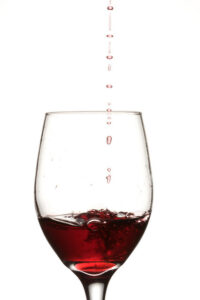
Translating the taste characterisics of wine requires the melding of a scientific mind and an artful spirit. As with any hard science, there is a great deal of objective material that needs to be rendered accurately in the target language — data such as sugar levels, degrees of alcohol, chemical compounds, temperatures, acids, fermentation processes, and the like. This is straightforward enough, albeit technical. But unlike purely scientific translation, wine also has a subjective element: the human factor. This is the sommelier or winemaker’s sensory experience of the wine. And here is where literal translation ends and artistic license begins.
The human factor is very cultural. Each individual taster has stockpiled a repertory of flavors and smells based on the culinary traditions of their country. When tasting a Chardonnay from Burgundy, a Frenchman may describe Pate d’amande (almond paste), brioche (a type of French bread), coing (quince) and groseilles (gooseberries) — all foods that are less common in the States. Since most Americans won’t have these elements in their flavor repertory, they would experience this white wine in a very different way and may describe macadamia nuts, toast, Granny Smith apples and citrus, for example. So as a translator, do you find the English equivalent for these flavors, however obscure they may seem in your target language and simply provide an apples-to-apples translation of the tasting notes? Or do you embellish a bit to convey the charm of the wine in a vocabulary that will be understood?
To further complicate matters, science can’t completely be cast aside because all tastes and smells within a given wine do have a scientific makeup. For example, the aroma of cherry and that of almond share a similar chemical composition; what varies is the concentration of the compound. So the threshold of the particular taster will determine if the flavor is perceived as cherry or almond — but both would be considered “correct”. So as tempting as it may be, the translator can’t just invent fruits, nuts and spices that are common in their target culture to make a given wine “readable”. Though the tasting experience is still quite subjective (since wine tasters can only draw from tastes and smells they have already experienced when describing a wine), there are typical flavor profiles associated with each type of wine, as a function of grapes, soils, microclimate, region and winemaking techniques.
Stay tuned as we further explore these intricacies of wine translation in a future blog post.
Photo attribution: Josh Kenzer
Insights for global growth

Power your strategic growth
Go beyond tactical localization with tailored, strategic solutions that resonate locally and drive growth globally.
Get started



